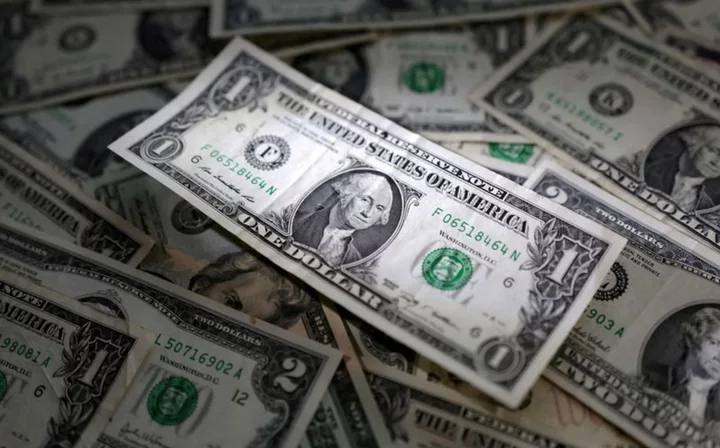By Rae Wee
SINGAPORE The U.S. dollar rose broadly on Tuesday and notched a seven-month high against the yen, while the yuan slipped after China cut two benchmark lending interest rates for the first time in 10 months.
China on Tuesday lowered its one-year and five-year loan prime rates (LPR) by 10 basis points, as widely expected, as authorities seek to shore up a slowing recovery in the world's second-largest economy.
The offshore yuan dipped slightly following the decision and was down more than 0.1% at 7.1734 per dollar, languishing near last week's roughly seven-month low.
"The extent of the lowering - we're talking basis points, not percentages, so it's not really going to move the dial," said Rodrigo Catril, senior currency strategist at National Australia Bank (NAB).
"What the market is really waiting for is for some concrete measures from the fiscal side in terms of spending."
Elsewhere, the U.S. dollar edged marginally higher in cautious trade after a holiday in the United States on Monday kept market activity muted.
The greenback peaked at 142.26 yen in early Asia trade, its highest since November, following the Bank of Japan's (BOJ) decision on Friday to maintain its ultra-easy monetary policy.
The yen has come under renewed pressure amid rising interest rate differentials between Japan and other developed markets globally.
"We believe that Japan's economy is recovering solidly compared to other major economies and will continue to outperform in the future. But, if monetary policy fails to reflect this shift of economic fundamentals and the BOJ keeps its dovish policy, then the yen should depreciate even more," Min Joo Kang, ING senior economist for South Korea and Japan, said in a client note.
The Australian dollar fell 0.42% to $0.6818, after minutes from the Reserve Bank of Australia's policy meeting this month showed the board considered leaving rates unchanged given consumer spending was clearly slowing, but felt risk to inflation had shifted to the upside.
The New Zealand dollar dipped 0.12% to $0.6191, after falling more than 0.5% in the previous session.
In other currencies, the euro slipped 0.03% to $1.0917, though remained supported by a still-hawkish European Central Bank after two policymakers on Monday said the bank should err on the side of further rate hikes as the inflation rate could come in even higher than it expects.
Sterling rose 0.05% to $1.2797, ahead of British inflation data and the Bank of England's (BoE) interest rate decision later in the week.
Markets are expecting the BoE to deliver a quarter-point rate hike on Thursday, which would be its 13th consecutive rise as the bank fights unexpectedly sticky inflation.
"The market has continued to increase pricing expectations of not only a delivery of potentially more than 25 basis points this week, but (also) higher terminal rates," said NAB's Catril.
"To some extent, we think that the pricing has become a little bit too aggressive in terms of what we think the Bank of England needs to do."
Against a basket of currencies, the U.S. dollar rose 0.03% to 102.51.
(Reporting by Rae Wee; Editing by Christopher Cushing)









